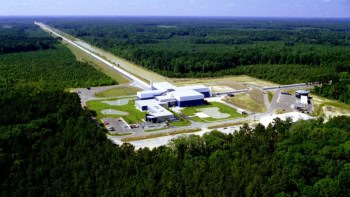
A decline in NASA’s research laboratories is seriously jeopardizing the agency’s ability to explore the outer planets and understand the beginnings of the universe, according to a report by the US National Academy of Sciences (NAS). The report, Capabilities for the Future: an Assessment of NASA’s Laboratories for Basic Research, finds serious shortcomings in NASA’s six research laboratories and says that urgent funding is needed to reverse the trend.
The institutions examined by the NAS’s 19-member panel are the Ames Research Center and the Jet Propulsion Laboratory, both in California, the Glenn Research Center in Ohio, the Goddard Space Flight Center in Maryland, the Langley Research Center in Virginia, and the Marshall Space Flight Center in Alabama. Apart from having been found to have inadequate laboratory equipment and services, the report also notes that more than 80% of the laboratories in the institutes are more than 40 years old, and typically require more maintenance than current funding permits.
“Over the past five years or more, there has been a steady and significant decrease in NASA’s laboratory capabilities, including equipment, maintenance and facility upgrades,” the report concludes. It blames the problem on a lack of funding for the laboratories. NASA currently spends each year just 1.5% of the “current replacement value” of its active facilities on maintenance, repairs and upgrades. The report also says that the deferred maintenance budget – upgrades that are passed on to following year’s budget – grew from $1.77bn to $2.46bn from 2004 to 2009, representing a “staggering maintenance and repair bill for the future”.
Resource requests
To reverse the decline, the committee recommends that fundamental long-term research and development should be managed separately from short-term mission programmes. Its hope is that NASA can make its research labs at least as good as those at the US Department of Energy and at top-tier universities.
“These research capabilities have taken years to develop and depend on highly competent and experienced personnel and infrastructure,” says committee co-chair Joseph Reagan, a former executive of Lockheed Martin. “Without adequate resources, laboratories can deteriorate very quickly and will not be easily reconstituted.”
NASA has also come under fire from former astronauts who participated in the Apollo Moon-landing programme as they continued their criticism of the administration’s plans to scrap a planned manned mission to the Moon. In Senate testimony, Neil Armstrong, the first man to walk on the Moon, expressed his concern that the administration’s plans will result in the US’s loss of leadership in human spaceflight. “If the leadership we have acquired through our investment is allowed simply to fade away, other nations will surely step in where we have faltered,” he said.



